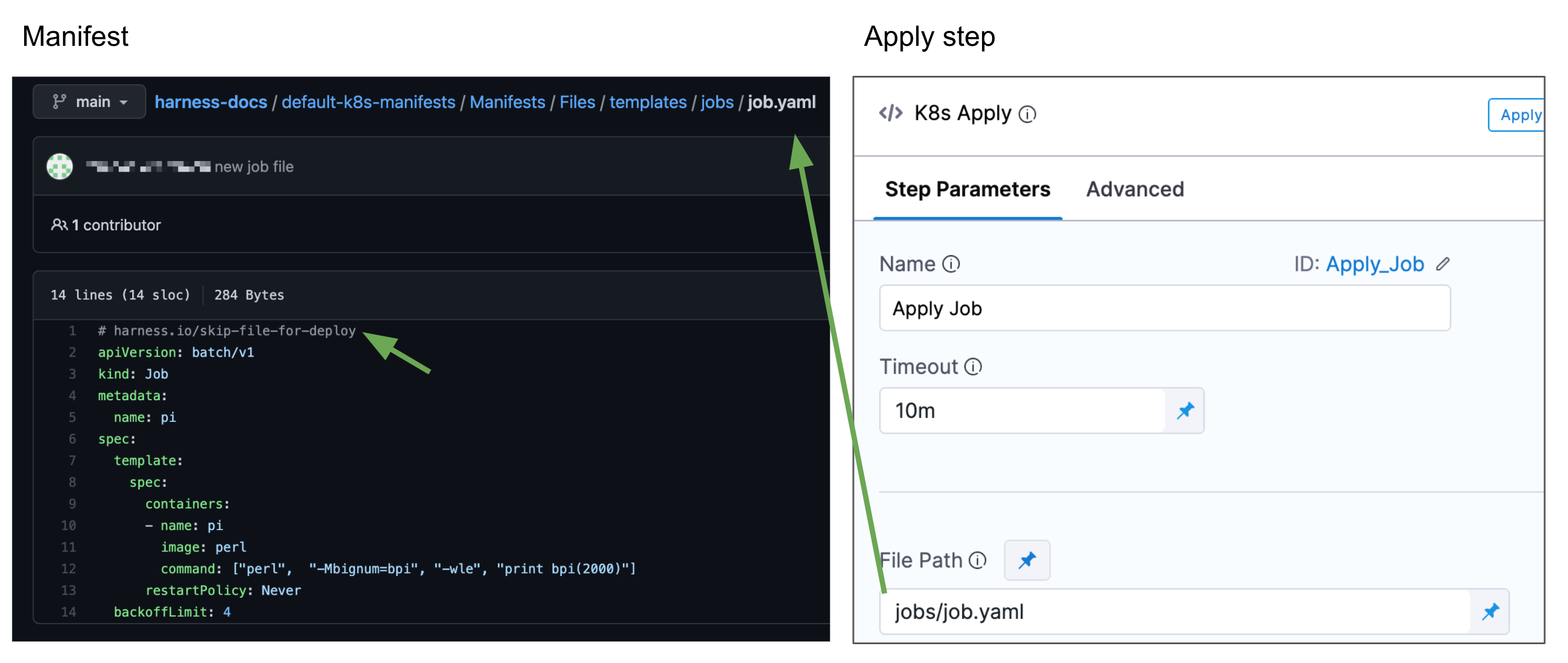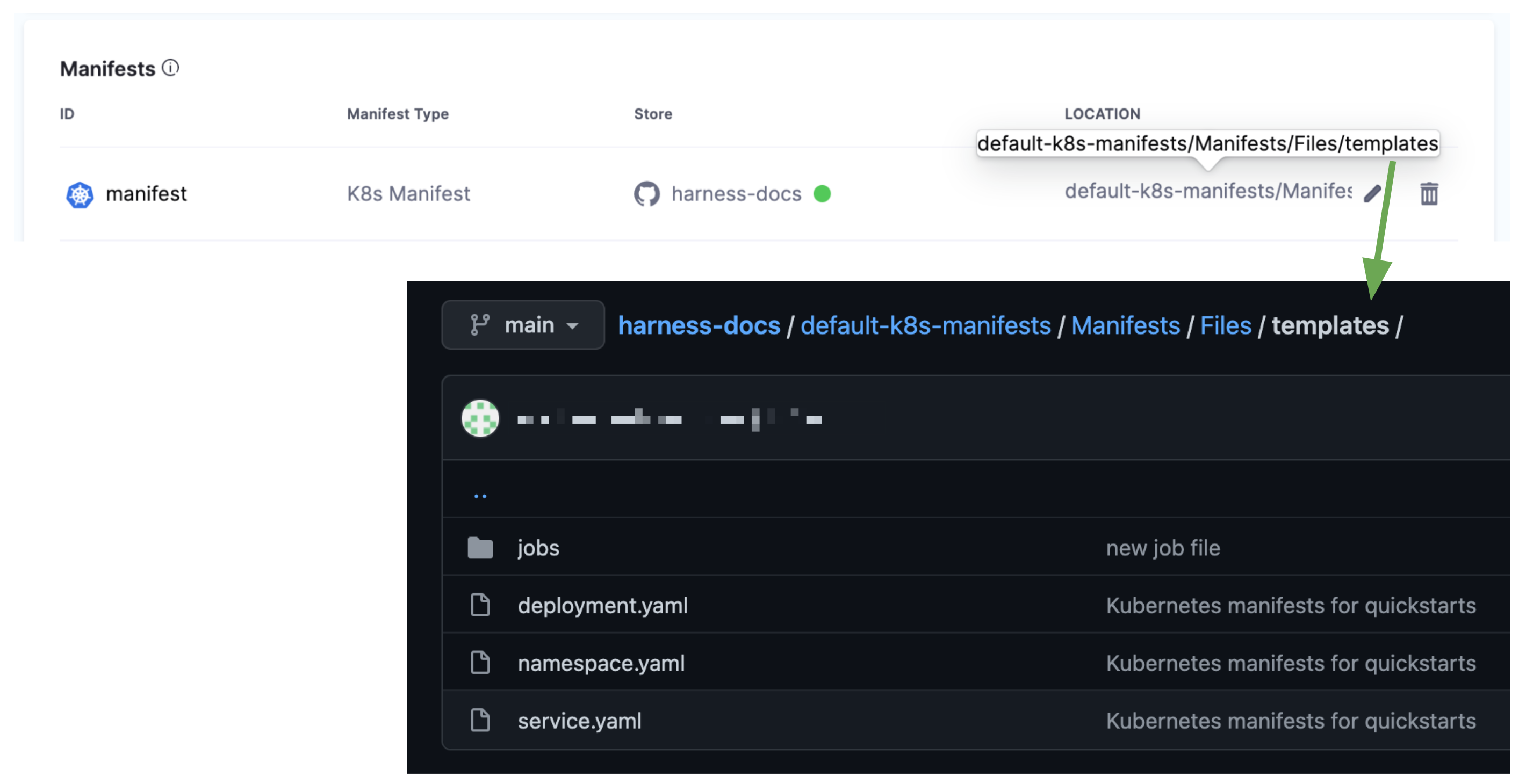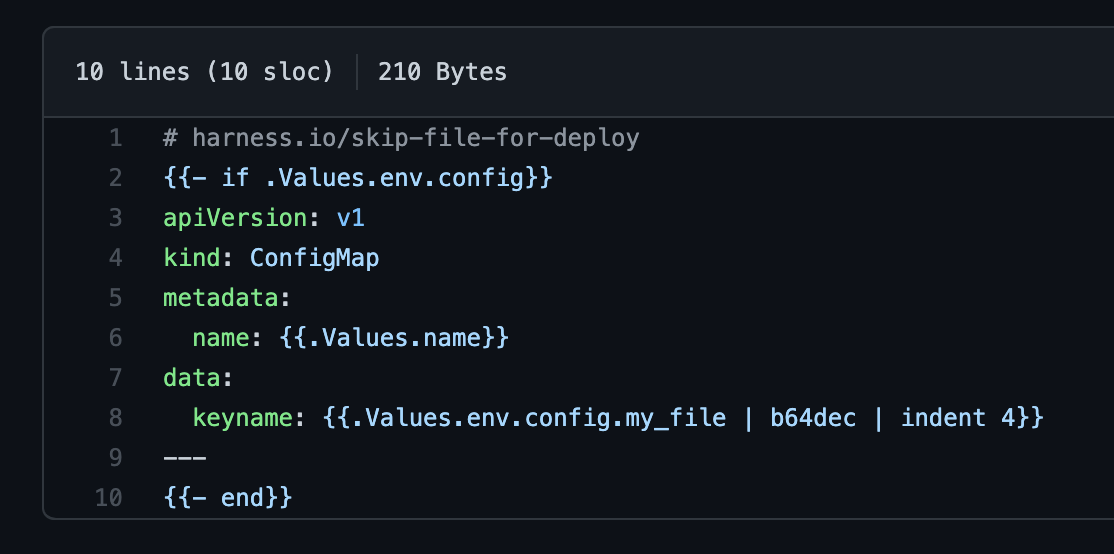Ignore a manifest file during deployment
This topic describes how to ignore manifests for the primary deployment and apply them separately using the Apply step.
You might have manifest files for resources that you do not want to deploy as part of the main deployment.
Instead, you can tell Harness to ignore these files and then apply them separately using the Harness Apply step. Or you can simply ignore them and deploy them later.
Before you begin
Visual summary
The following image shows how you can ignore a Jobs manifest and then apply it separately using the Apply step.

What workloads can I deploy?
See What Can I Deploy in Kubernetes?.
Limitations
- Kubernetes objects and resources deployed by the Apply step are not versioned or rolled back automatically by Harness.
Ignore a manifest
You add your manifest files to the stage's Service section in Manifests. You can add manifests individually or by simply adding their parent folder:

To ignore a resource file that is in the directory in the Service Manifests section, you add the comment # harness.io/skip-file-for-deploy to the top of the file.
For example, here is a ConfigMap file using the comment:

Now, when this Pipeline is run, this ConfigMap resource will not be applied.
The comment # harness.io/skip-file-for-deploy must be at the top of the file. If it is on the second line it will not work and the resource will be deployed as part of the main Workflow rollout.
Apply ignored resource
The Apply step will apply any resource in a Service Manifests explicitly. You must provide the path and name of the file in Apply, and Harness will deploy the resource.
For details on the Apply Step, see Deploy Manifests Separately using Apply Step.
For example, the following image shows a Jobs resource in a Service Manifests section that uses the ignore comment # harness.io/skip-file-for-deploy so that the stage does not apply it, and the Apply step that specifies the same Jobs resource:

The File Path setting in the Apply step must include the folder name and the file name. In the above example, the folder jobs is included with the file name job.yaml: jobs/job.yaml.
The path in File Path must be relative to the path you specified for the manifest in the Service Manifests section.
For example, if the path in Manifests is default-k8s-manifests/Manifests/Files/templates and the Job manifests is in default-k8s-manifests/Manifests/Files/templates/jobs/job.yaml you must enter jobs/job.yaml in File Path.
You can include multiple resource files in the Apply step File Path setting.
If you apply the ignore comment # harness.io/skip-file-for-deploy to a resource but do not use the resource in an Apply step, the resource is never deployed.